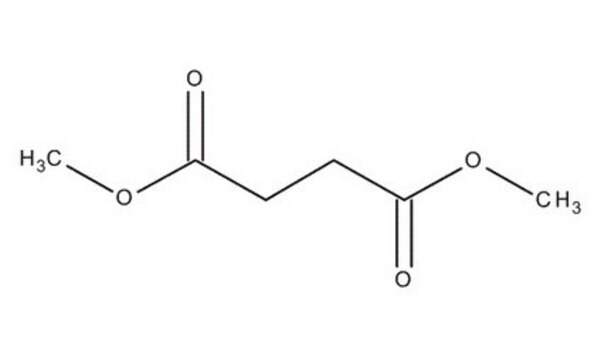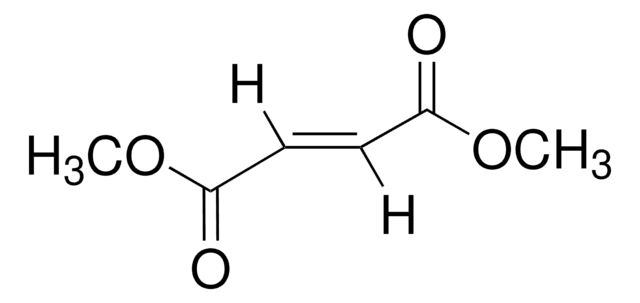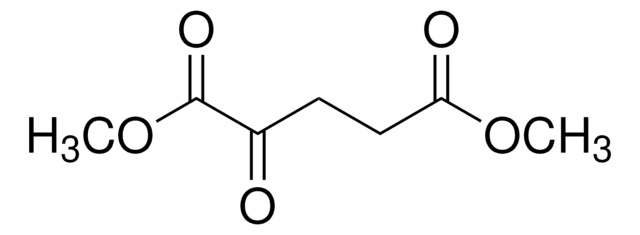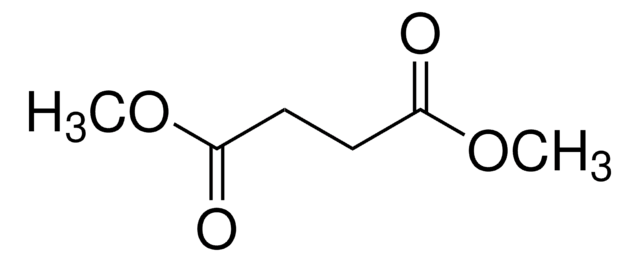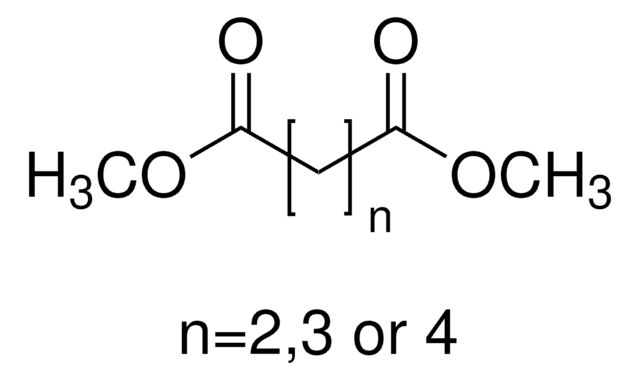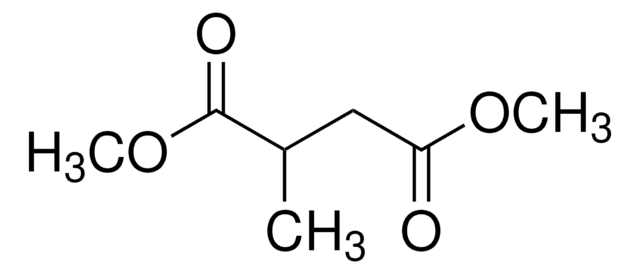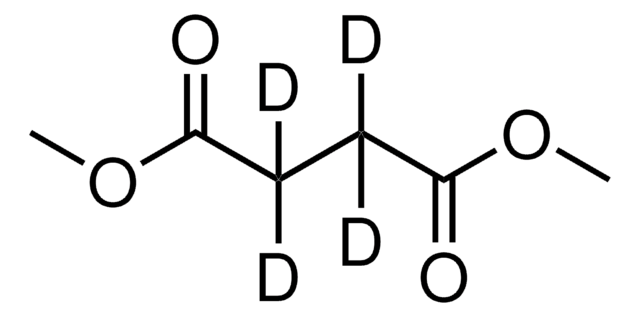W239607
Dimethyl succinate
98%, FG
Synonym(s):
Dimethyl butanedioate, Succinic acid dimethyl ester
About This Item
Halal
Kosher
Recommended Products
biological source
synthetic
Quality Level
grade
FG
Halal
Kosher
reg. compliance
EU Regulation 1334/2008 & 178/2002
FDA 21 CFR 117
FDA 21 CFR 172.515
vapor pressure
0.3 mmHg ( 20 °C)
assay
98%
autoignition temp.
689 °F
expl. lim.
8.5 %
refractive index
n20/D 1.419 (lit.)
bp
200 °C (lit.)
mp
16-19 °C (lit.)
density
1.117 g/mL at 25 °C (lit.)
application(s)
flavors and fragrances
documentation
see Safety & Documentation for available documents
food allergen
no known allergens
organoleptic
green; fruity; floral; sweet
SMILES string
COC(=O)CCC(=O)OC
InChI
1S/C6H10O4/c1-9-5(7)3-4-6(8)10-2/h3-4H2,1-2H3
InChI key
MUXOBHXGJLMRAB-UHFFFAOYSA-N
Looking for similar products? Visit Product Comparison Guide
Related Categories
General description
Application
- Metabolic Bypass Rescues Aberrant S-nitrosylation-Induced TCA Cycle Inhibition and Synapse Loss in Alzheimer′s Disease Human Neurons.: This research discusses the role of metabolic intermediates like Dimethyl succinate in bypassing biochemical blocks in Alzheimer′s disease, offering potential therapeutic avenues (Andreyev et al., 2024).
- Update to RIFM fragrance ingredient safety assessment, dimethyl succinate, CAS Registry Number 106-65-0.: A comprehensive safety assessment of Dimethyl succinate as a fragrance ingredient, highlighting its toxicological profile and safe usage parameters (Api et al., 2023).
signalword
Warning
hcodes
pcodes
Hazard Classifications
Eye Irrit. 2
Storage Class
10 - Combustible liquids
wgk_germany
WGK 1
flash_point_f
201.2 °F - closed cup
flash_point_c
94 °C - closed cup
ppe
Eyeshields, Gloves, type ABEK (EN14387) respirator filter
Choose from one of the most recent versions:
Already Own This Product?
Find documentation for the products that you have recently purchased in the Document Library.
Customers Also Viewed
Global Trade Item Number
| SKU | GTIN |
|---|---|
| W239607-1KG | |
| W239607-SAMPLE-K | 4061837519901 |
| W239607-10KG-K | 4061837519871 |
| W239607-10KG | |
| W239607-1KG-K | 4061837519888 |
| W239607-25KG | |
| W239607-25KG-K | 4061837519895 |
| W239607-SAMPLE |
Our team of scientists has experience in all areas of research including Life Science, Material Science, Chemical Synthesis, Chromatography, Analytical and many others.
Contact Technical Service